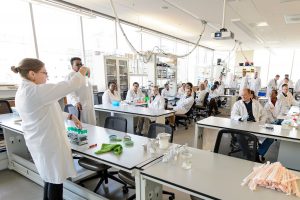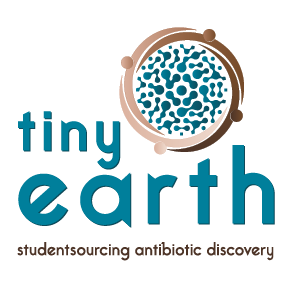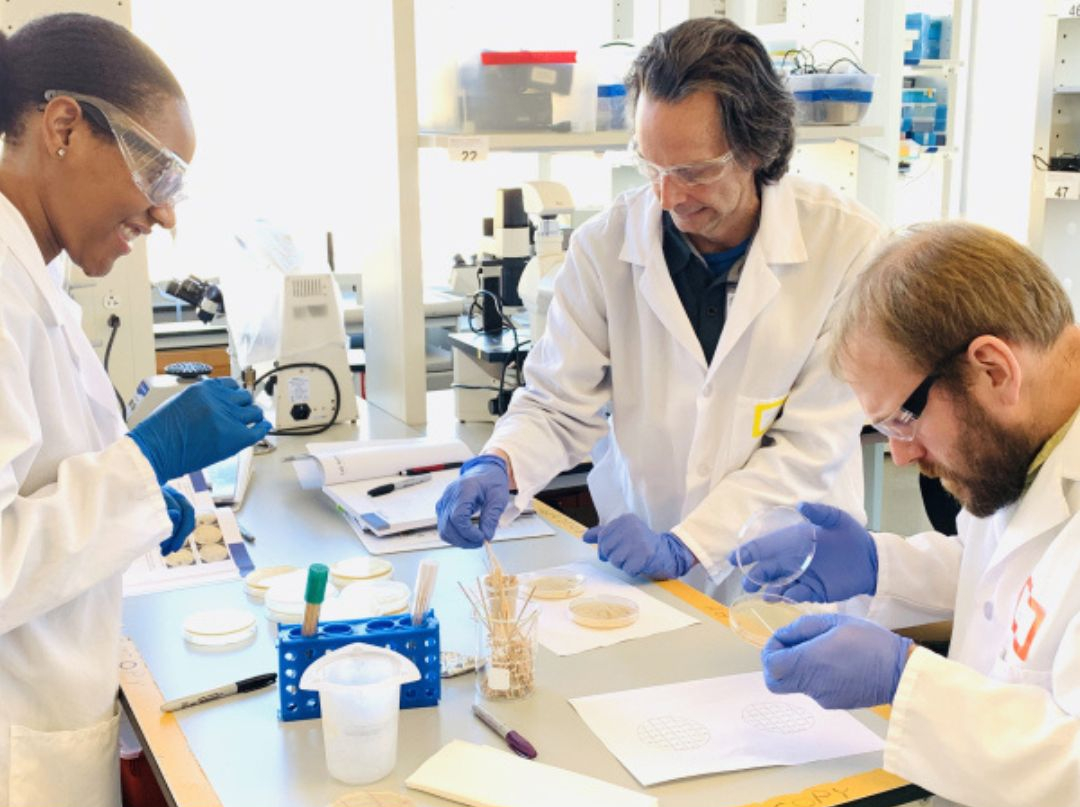Mentoring has been at the heart of Tiny Earth since its genesis, but with new funding — a portion of a larger grant totaling over a half million dollars from the National Research Mentoring Network (NRMN) — a team will study new ways of enhancing mentor networks among Tiny Earth partner instructors and their students in a five-year project.
The National Institute of Health’s Diversity Program Consortium created the NRMN, a group housed at UW-Madison, to provide mentorship and workforce development to undergraduates and faculty in science, technology, engineering, and math fields. Director of the Wisconsin Institute for Discovery Jo Handelsman and assistant professor of molecular and cell biology at the University of Connecticut Nichole Broderick earned a subaward to one of 11 research grants sponsored by the NRMN’s Science of Mentoring, Networking, and Navigating Career Transition Points segment to help fulfill the NIH’s mission of diversifying the biomedical research pipeline.

Nichole Broderick talks with instructors from more than 20 colleges and universities at a Tiny Earth Partner Instructor training.
The project, led by Mica Estrada at the Institute for Health and Aging at the University of California, San Francisco, aims to test the impact of novel peer mentoring strategies among historically underrepresented and historically overrepresented faculty on mentor-mentee relationship quality as well as faculty and student persistence in biomedical careers.
“A mentor network has been critical to Tiny Earth because experienced instructors have provided assistance to new ones as they start teaching the course,” Handelsman says. “This project will place the mentor pairing on a systematic foundation, which we hope to be much more effective.”
The subjects of the study: new Tiny Earth partner instructors and their undergraduate students.
Successfully teaching Tiny Earth material involves support from the network. This begins with an instructor training on relevant lab and pedagogical skills. The subaward will focus on recruiting faculty from minority-serving institutions or who are themselves historically underrepresented to teach Tiny Earth and help cover their training expenses.
“The week-long Tiny Earth training is rich with opportunities to learn microbiological concepts, lab skills, and teaching techniques,” Tiny Earth Executive Director Sarah Miller says. “[It] also serves as the portal into the robust network of 600+ instructors in 19 countries who teach more than 10,000 students per year.”
In addition to the training, Tiny Earth supports new instructors by pairing them with seasoned instructors. But this project will introduce a new intervention, called “bird of a feather,” which seeks to codify and enrich match-making, ultimately to create academic environments where all faculty and students feel more included, confident, and interested in pursuing STEM. Focusing on similar attitudes, beliefs, outlooks, and values, “bird of a feather” hopes to foster a greater sense of identification between mentors and mentees.
“[The] ‘bird of a feather’ activity is quite a thoughtful exercise about who you are, what matters to you, and how you use that to connect with your mentor”
“The novel aspect of the mentoring plan in this project is the concept that our collaborator, Mica Estrada, has dubbed, ‘birds of a feather,’ which means finding similarities among instructors and linking mentors and mentees based on those common features,” Handelsman adds. “We will determine the similarities through an extensive survey.”
In addition to the “bird of a feather” survey tool, faculty will complete a “bird of a feather” support-network mapping activity, which involves redefining mentorship from a mentor-mentee duo to a broad network of supporters, reflecting on the support individuals do and don’t have, and planning actions to strengthen diversity and connectivity of their network.
“[The] ‘bird of a feather’ activity is quite a thoughtful exercise about who you are, what matters to you, and how you use that to connect with your mentor,” Miller says. “[Estrada is] interested in finding strategies and mechanisms for where people are birds of a feather and therefore the mentor-mentee relationship can be stronger and more robust.”
Existing evidence has shown that development of mentor networks can influence scholars pursuing biomedical careers. Cues of kindness and belonging are particularly important for historically underrepresented students involved in STEM and can impact science identity development. In this spirit, the research will also study short- and long-term downstream effects of faculty “bird of a feather” mentor matching and support mapping on 3,000 undergraduates enrolled in Tiny Earth courses.
Using relational thinking interventions, the research will ultimately determine for whom among faculty and students “bird of a feather” activities have the strongest impact based on gender, historical representation in STEM status, first-generation in college status, or other identifiers.
“The idea is to find a wider array of ways that people can connect that allow all the benefits of mentoring to come through,” Miller says. “It’s a wonderful project. It’s diverse and collaborative, modeling the very principles that it’s studying.”


